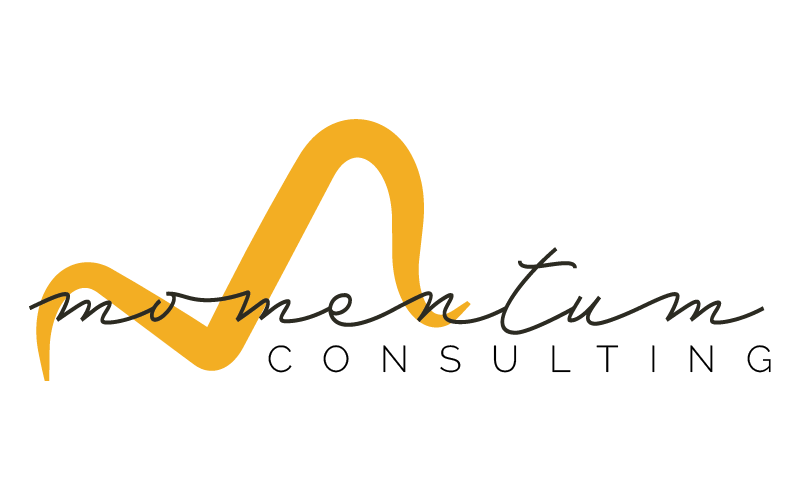Looking Ahead: The Convergence of Web App Development and Social Media Management Specialties
Written By Danielle Fauteaux
Influencers want to own their audiences. After all, it takes a lot of monetary, physical, and temporal resources to build up an audience on a social media platform. The worst thing that can happen for a famous content creator is for the algorithm to change or for the topic they are speaking about to be deemed unworthy of syndicating by the social media platform.
That’s just one trend influencing what I foresee will be the need for web application development firms and audience management agencies (like social media marketing companies and even PR firms) to join forces more intentionally to meet demand in the marketplace. Let’s dig deeper.
What’s Causing This Trend to Emerge
There are several causes for what I see as the opportunity for strategic agency partnerships and in-house structuring of web app development and social media management talents:
- Gen Z consumers, in general, resist traditional forms of social media and are seeking out ways to control the information they see. While they do still want to explore new content, influencers have gained popularity because, in my view, it takes less energy to find a person or brand you trust and seek out information there, rather than vet new sources constantly.
- Society is heavily siloed, and cliques are present even in digital spaces where there should be access to competing ideas and perspectives, because that siloed model is more profitable.
- Even with platforms that are quickly and widely adopted, the more quickly that emerging social media platforms are monetized and infiltrated by advertisers, the sooner users seek alternatives and are willing to move away from existing platforms.
- The social media platform’s strategies to monetize its platforms by throttling audience reach and introducing ad heavy user experiences makes it challenging for corporate brands, creators and influencers to retain access to their audiences and decreases creator’s return on investment.
- Influencers are starting to prefer making the investment to develop platforms where they own their audiences and have greater controls over how their users experience connecting with their brand.
- The soft skills that exist within social media management agencies are what Influencer’s marketing teams need to aid in UI development and ongoing management of their owned platforms.
- It takes a certain skillset to build a web application. It’s another set of skills entirely that increase app adoption and create ongoing delightful moments for app users.
- This convergence is what I see brands doing to increase CLV and brand loyalty, though, not to increase visibility. I do expect that the need to leverage third-party social media to build trust, become recognized, and then drive new downloads of these apps as they are shown to be more convenient and enjoyable digital experiences with the corporate and personal brands.
Opportunities and Risks
Just as the understanding of “full service marketing” agency adapted in the decade after inbound marketing took the industry by storm, so will it continue to adapt.
Before the internet, “full service marketing” meant the marketing shop had the right people with the right connections and skills to secure placements in printed and broadcasted pieces.
After the widespread adoption of the internet, “full service marketing” looked more like being able to build, manage, and leverage promotional channels that pointed users back to the client website.
Looking ahead, it is probable that the way “full service marketing” is understood will change again, because the services marketing agencies offer have to adapt in order for the agency to stay relevant to clients and their customers. In such a case, there will be new opportunities for agencies to offer different services either wholly in-house or via the development of strategic agency partnerships.
Opportunities for Internal Offerings Alignment
I see the opportunity for internal offering alignment to be easier for larger agencies. In order to offer both the social media expertise and web application development well, larger agencies have an upper hand in that they can provide clients with the best of the best talent, have more thorough user testing and quality assurance capabilities, and deliver more quickly through dividing and conquering the work.
The opportunity to shift internal offerings can be leverages within your existing customer base, though, especially if you are a social media marketing agency. As your account teams are seeing less impact on organic campaign and having to rely more on PPC to get results for clients, you can start to have cost benefit conversation with clients to retain clients, increase revenues, and increase customer lifetime value.
There’s opportunity, also, for software and web app development shops to establish a recurring revenue stream. For dev agencies that historically tend to rely on project based models, and whose innovations are often stymied for that fact, creating internal capabilities whereby you have a team of content creators who then manage the content being shared and engaged with on the owned platform could generate new opportunities for further innovation and experimentation.
Risks for Internal Offerings Alignment
Regardless of agency size, what matters most is ensuring your target audience is seeking out these kinds of owned platforms. Different industries are moving this direction at different paces, and you want to be sure that the majority of your target audience will be moving that direction in a matter of years, not just the early adopters.
At the same time, the results that social media marketing teams are able to get out of global social media platforms remain uncontrolled and somewhat unpredictable, and that is a pain that exists for prospects when evaluating social media management services.
Results from content creation on owned platforms tends to be more predictable than results from content creation on external platforms.
As the social media landscape continues to change, your agency would need to remain on the lookout for third-party social media platforms that are being adopted and continue to provide expertise in managing the whims of the third-party creators.
Further, you need to ensure that the people filling the seats on your bus are excited about the prospect of implementing and managing this kind of work.
Opportunities for Strategic Agency Partnerships
Think about the stereotypical personalities of social media marketing experts. Now think about the stereotypical personalities of software developers. High potential for clashing, anyone?
Because the kinds of people that succeed as developers are different than the kinds of people who succeed as social media account executives and creatives, creating a bridge via strategic business partnership rather than trying to create a winning agency with potential for personality clashing is another opportunity that is emerging.
Collaborations between social media marketing agencies — that can manage the client’s audience and brand effectively and bring tribal knowledge to inform the UI of the owned app being developed – with software and web app development shops – that can deliver a highly customized, functional application that is structurally sound and delightful for users – is a partnership opportunity that I think more agencies should start pursuing. Most helpful will be establishing a partnership with a firm that
Risks for Strategic Agency Partnerships
While the risks are potentially lower when you are partnering with another agency, it is more common that the risks are simply different.
Client alignment is critical when you are partnering with another agency, and you risk misunderstanding who they serve and how if you approach the partnership conversations too lightly.
You also want to ensure compensation is fair for the value contributed. Divvying project management and client management responsibilities is difficult because the fewer points of contact for the client, the better. Similarly, over-communication as the communication style is a must; without it, you’d risk client friction and project failure.
It’s also harder to keep projects on time and on budget when you partner. (But overall project costs can generally be lower because of the specialized delivery process by each partner). You have to manage workloads that may vary as well.
All of these issues can be overcome with clear lines of communication and proactive planning.
Looking Ahead
What all marketing agency leaders should be doing is looking forward and understanding how current digital user behavior is changing and determining how to adapt your agency offerings and talent lineup to address those behaviors.
Among other factors, clients and prospects that operate to build an audience through digital content are looking for effective ways to better connect with their audiences and retain relevance with up and coming primary consumers – Gen Z’ers.
Given the current stakeholders, variables, and user tendencies at play, I see an opportunity for social media marketing agencies and web application development shops to combine forces and deliver delightful brand and influencer app experiences that connect corporate and personal brands with customers.
Building a successful business takes grit, a focus on your value, and sometimes a *loving* kick in the pants.
Needing an ally as you achieve your long-term goals?
I’d be happy to help.

